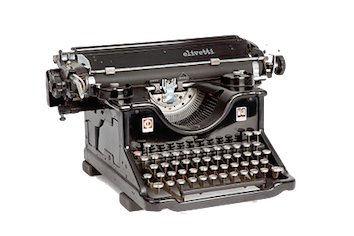TYPE DESIGN INFORMATION PAGE last updated on Fri Nov 14 13:27:31 EST 2025
FONT RECOGNITION VIA FONT MOOSE
|
|
|
|
Olivetti
Founded in 1908 by electrical engineer Camillo Olivetti (1868-1943), this manuacturer of typewriters, computers, tablets, smartphones, printers and other business products is headquartered in Ivrea near Turin, Italy. In 2003, it became part of the Telecom Italia Group. Camillo's son, Adriano Olivetti (1901-1960), developed the company internationally. Its typewriters included the Olivetti M40 (1930, by Camillo Olivetti and Gino Levi Martinoli) and the Lettera 22 (1950, by Marcello Nizzoli). In 1959, it bought one of its competitors, the Underwood Typewriter Company. In 2015, Maria Ramos Silva wrote the following comprehensive dissertation at the University of Reading: Type design for typewriters: Olivetti. Type designers who were commissioned to design typefaces for Olivetti include
Olivetti had many in-house typefaces. These include these, grouped by style:
Digital revivals include
|
EXTERNAL LINKS |
| | |
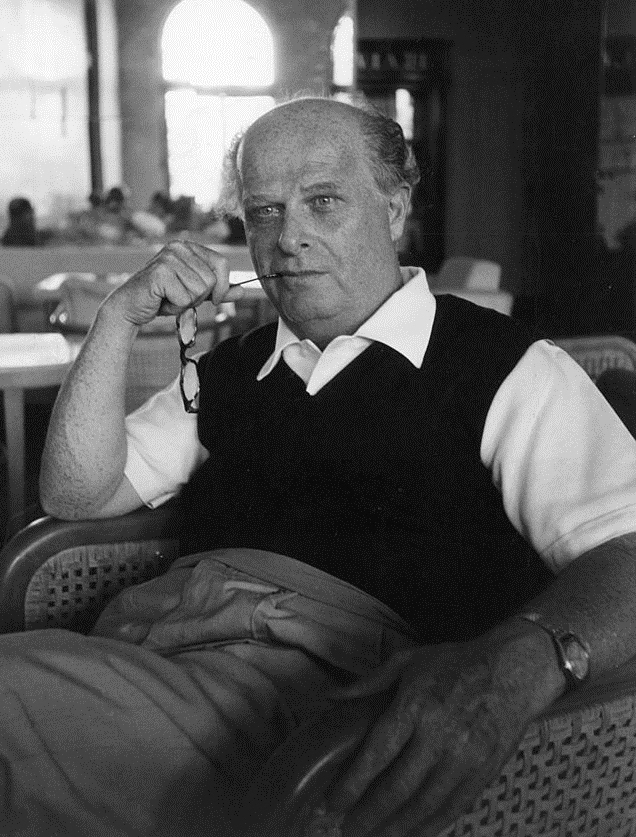
file name: Adriano Olivetti 1957

file name: Camillo Olivetti 1930s
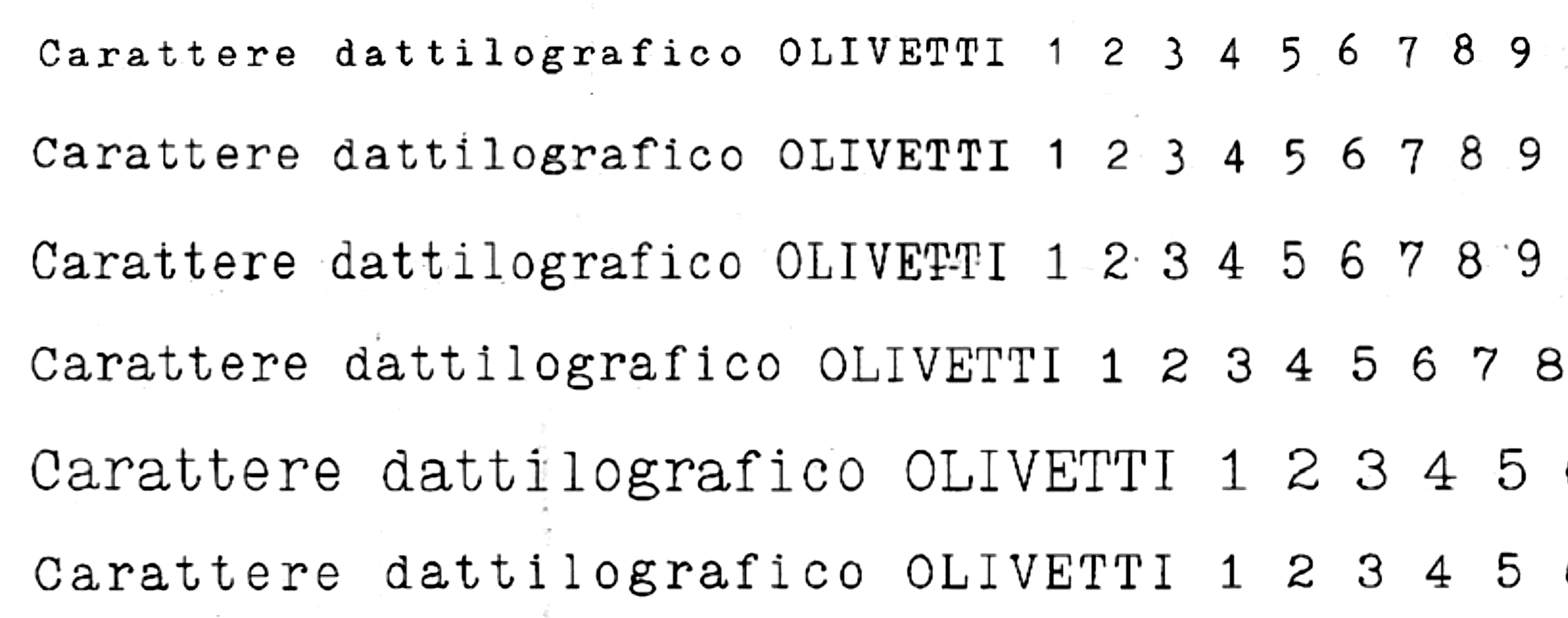
file name: Olivetti Elite Pica Pica Large Roman Medium Roman Large Ministero Roman Large

file name: Olivetti Lettera Pica Imperial
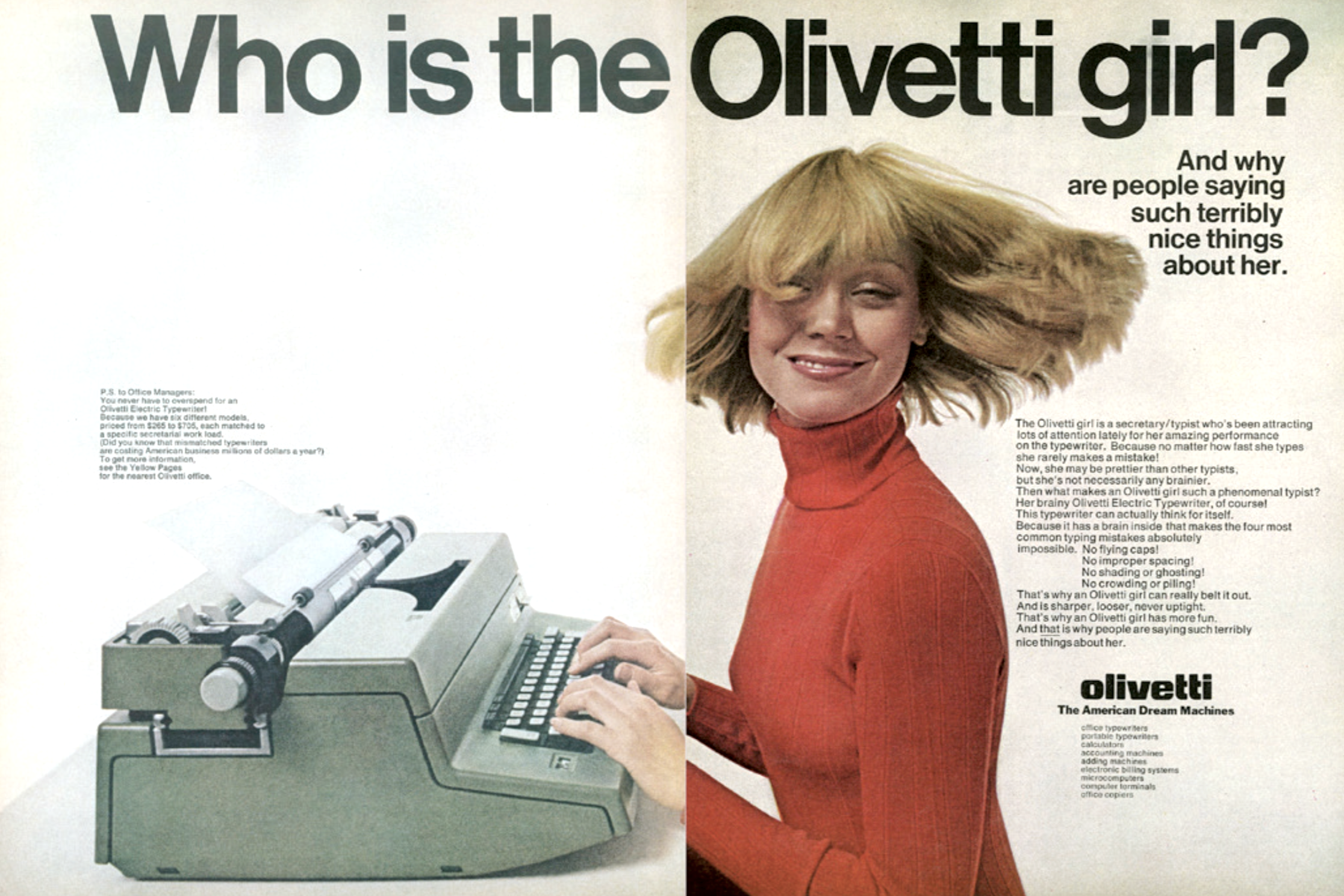
file name: Olivetti Ad in U S A 1967

file name: Olivetti Candia
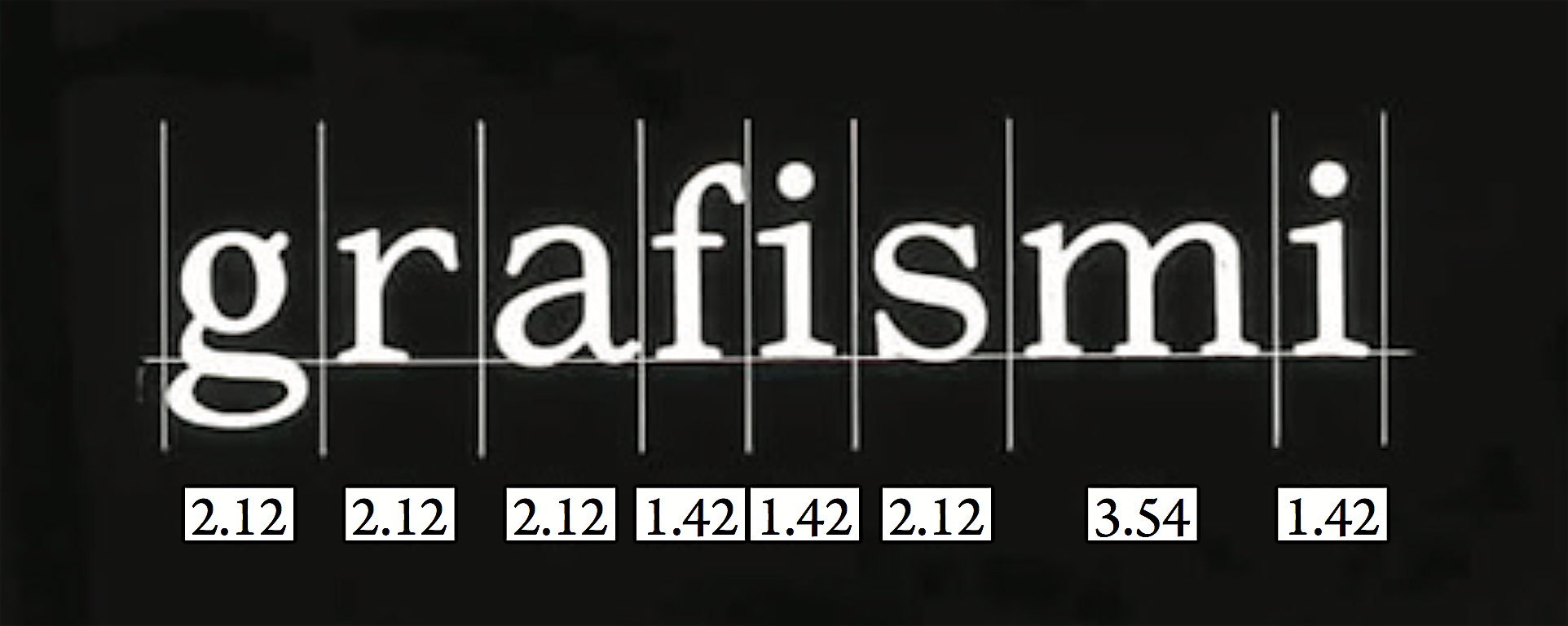
file name: Olivetti Carlyle 1968

file name: Olivetti Carlyle

file name: Olivetti Cubic by Caracteres 1950s

file name: Olivetti Cubic by Caracteres 1950s
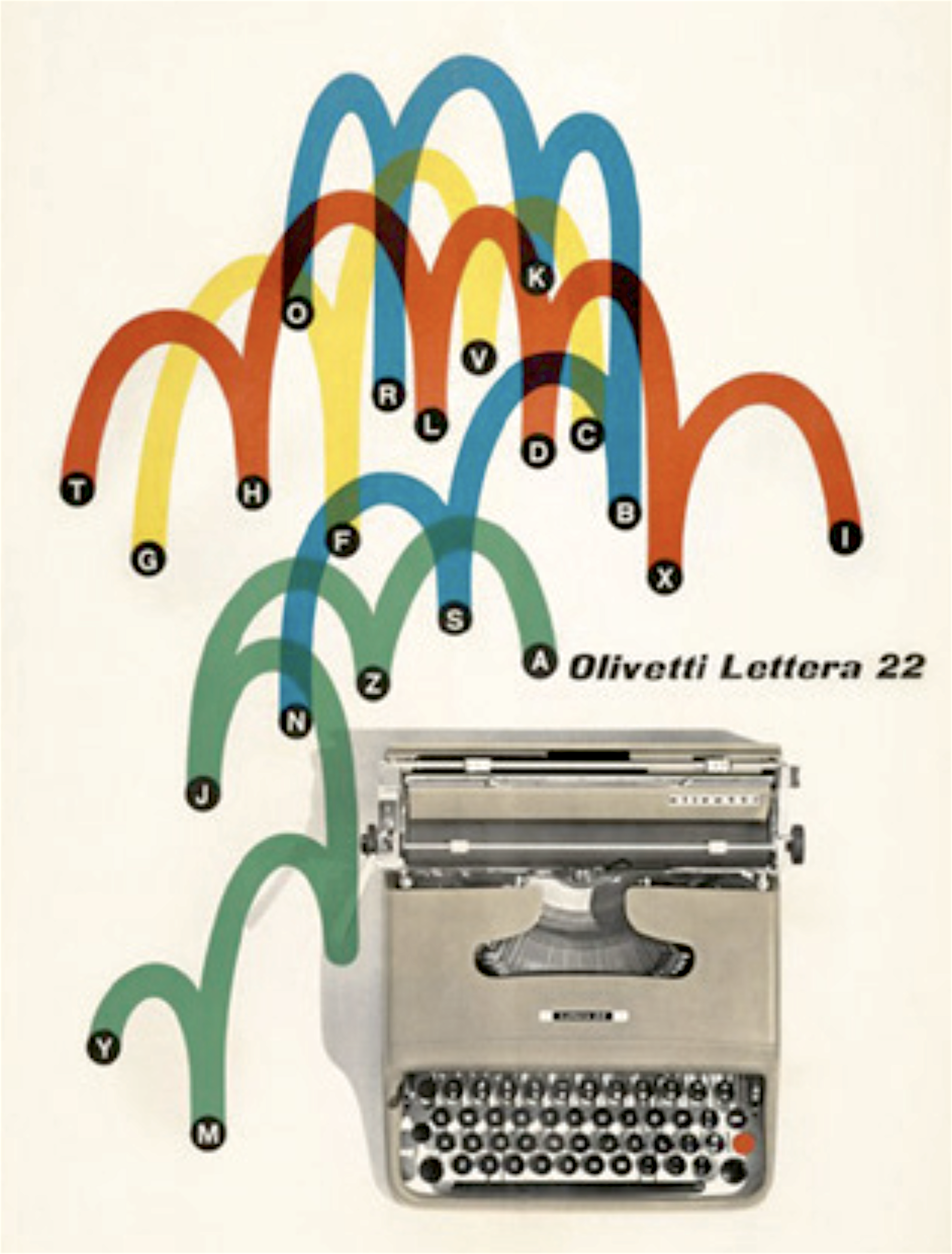
file name: Olivetti Lettera22

file name: Olivetti M40 Typewriter 1930

file name: Olivetti M P1 Typewriter Ad 1933

file name: Olivetti Notizia

file name: Olivetti Notizia

file name: Olivetti Quadrato

file name: Olivetti Quadrato
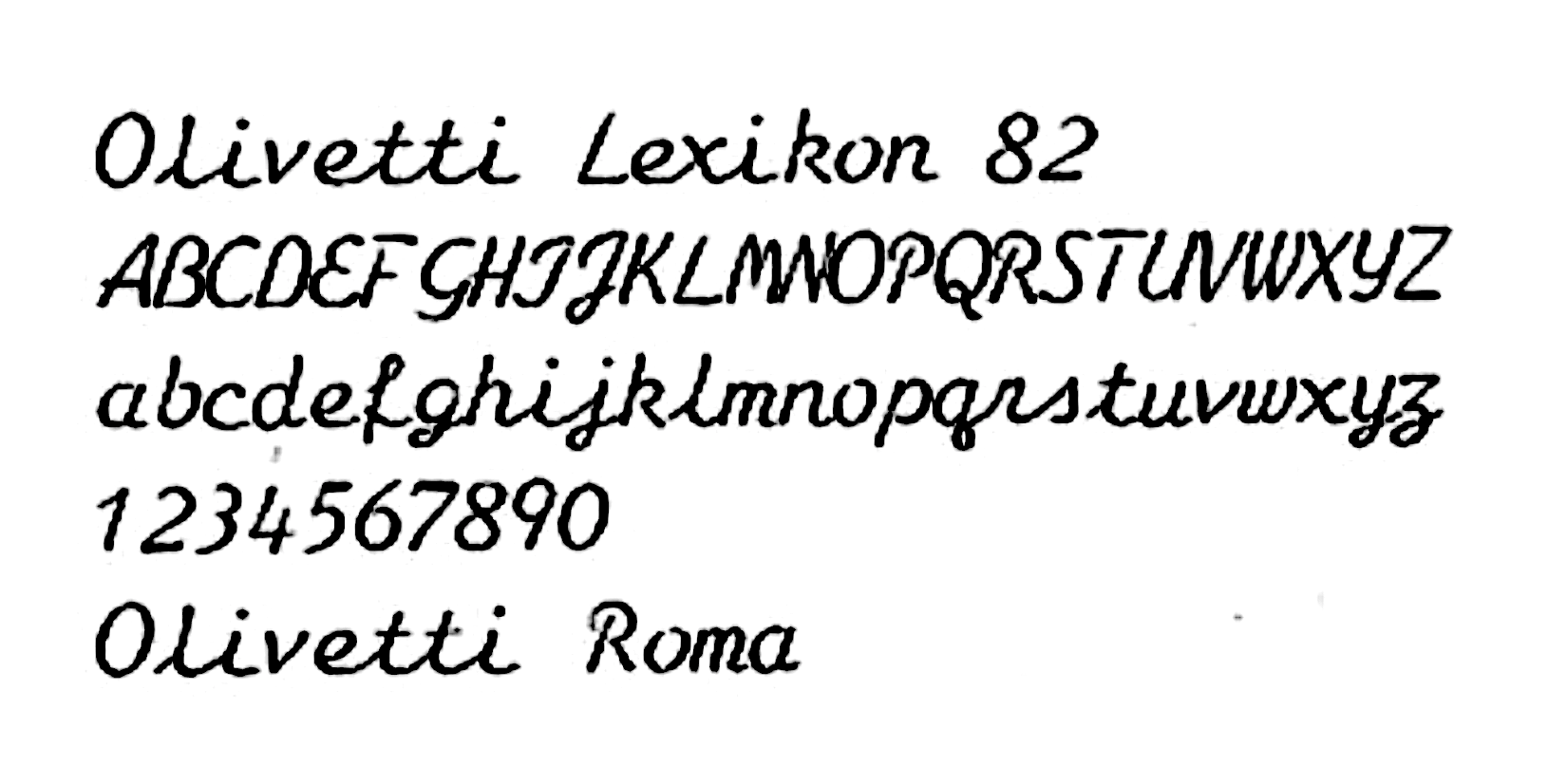
file name: Olivetti Roma

file name: Olivetti Simplicitas

file name: Olivetti Techno Pica by Setag 1950s

file name: Olivetti Telegrama Avvisi Gigante
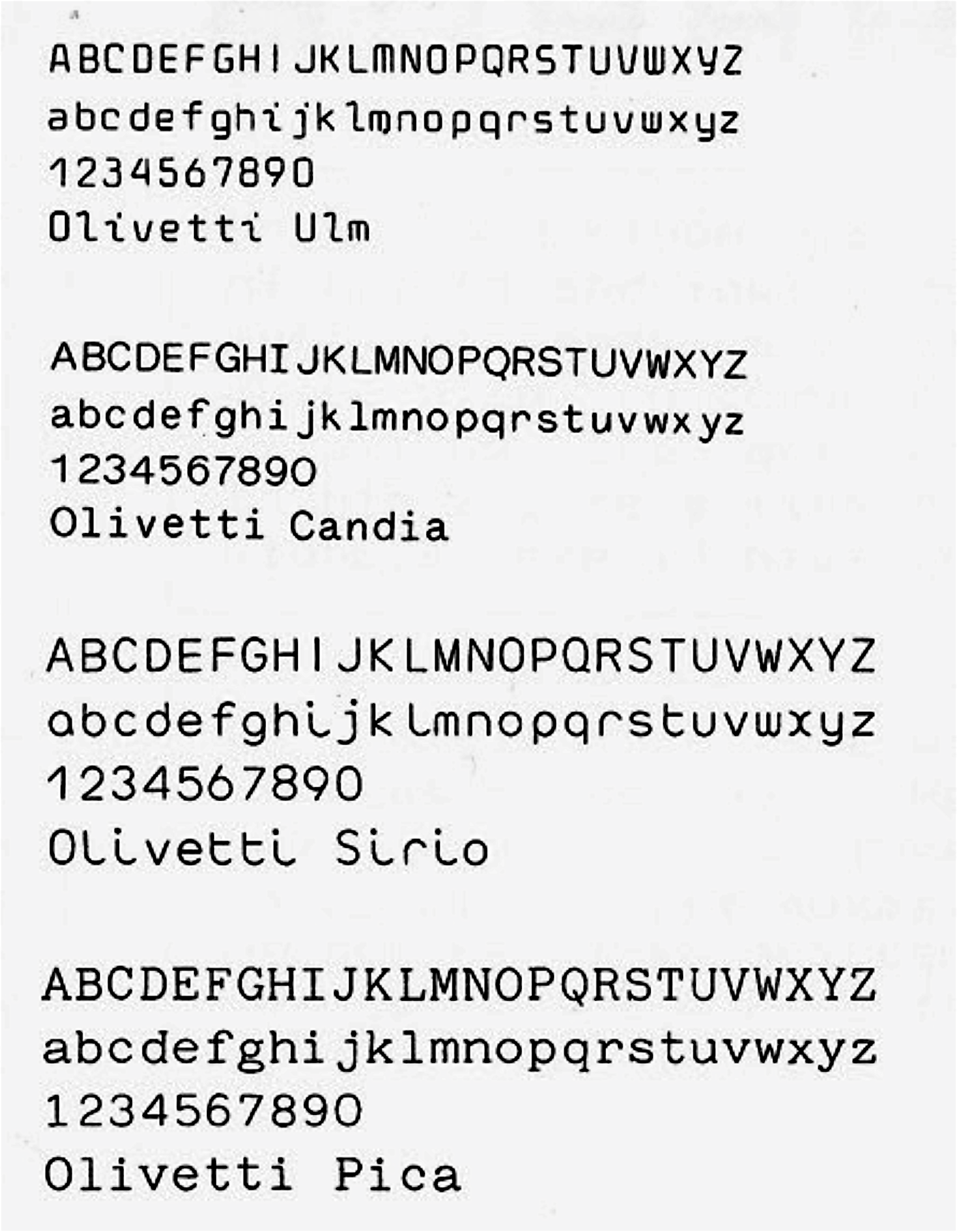
file name: Olivetti Ulm Candia Sirio Pica

file name: Stephan Mueller L L Valentine 2002
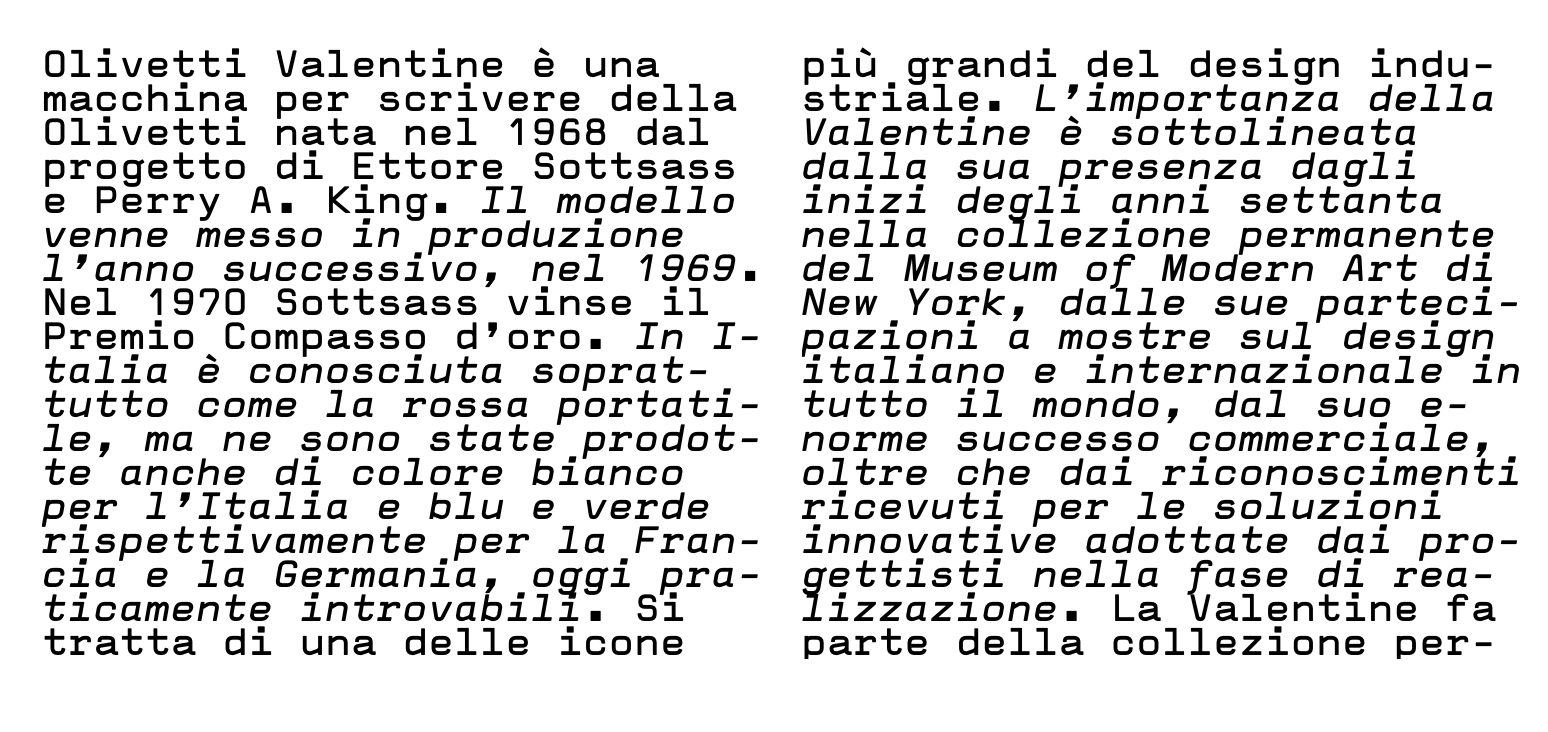
file name: Stephan Mueller L L Valentine 2002

file name: Stephan Mueller L L Valentine 2002
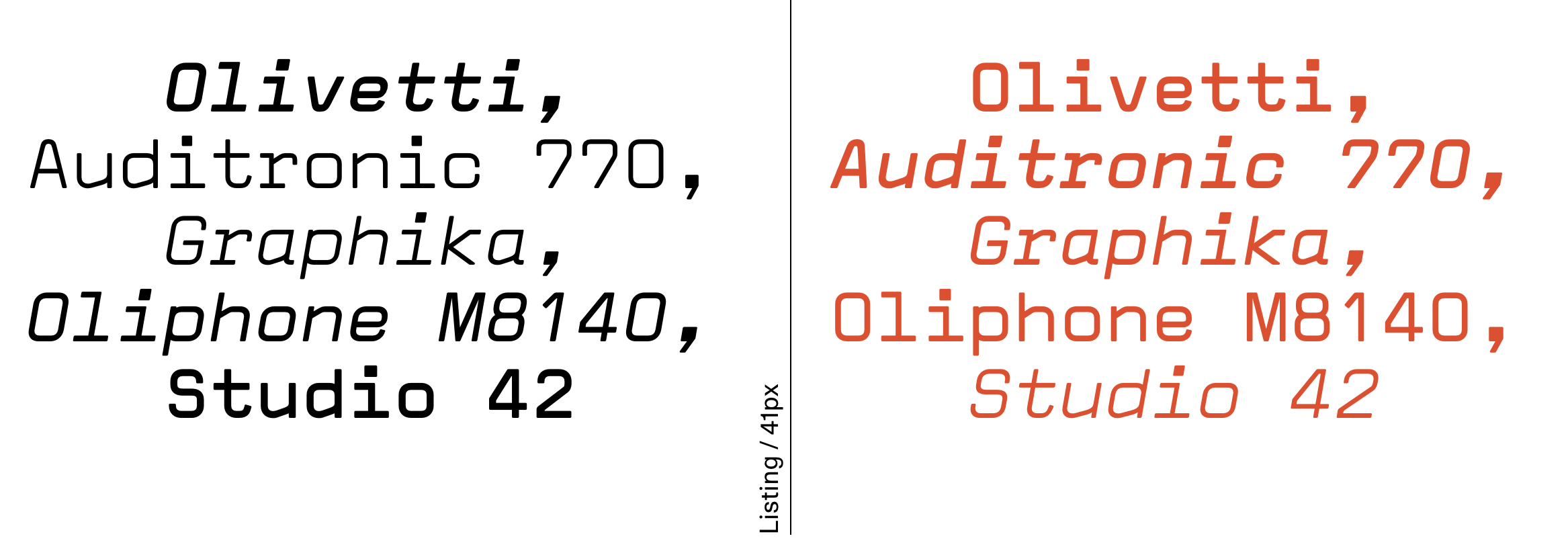
file name: Stephan Mueller L L Valentine 2002

file name: Stephan Mueller L L Valentine 2002
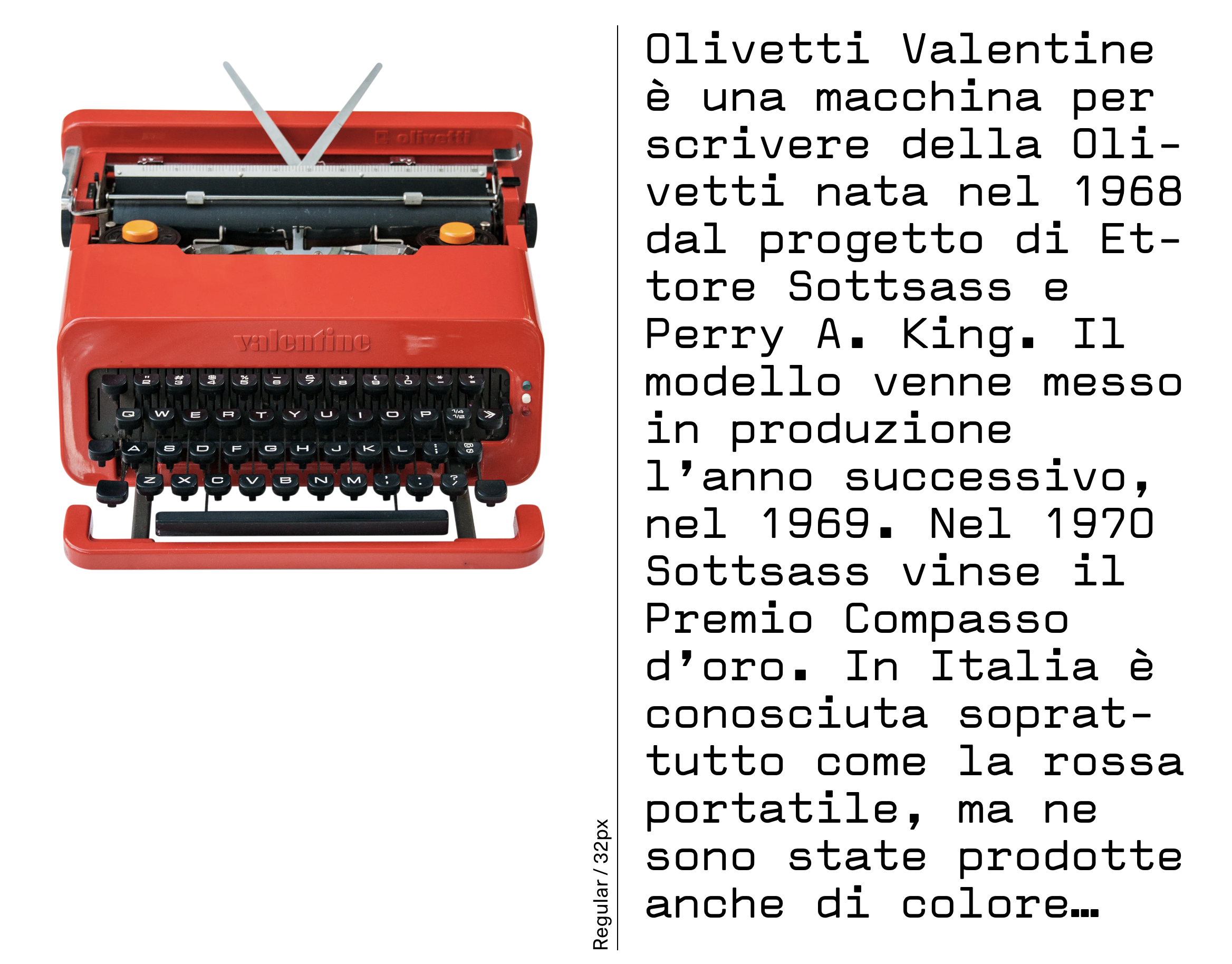
file name: Stephan Mueller L L Valentine 2002

file name: Olivetti Valentine
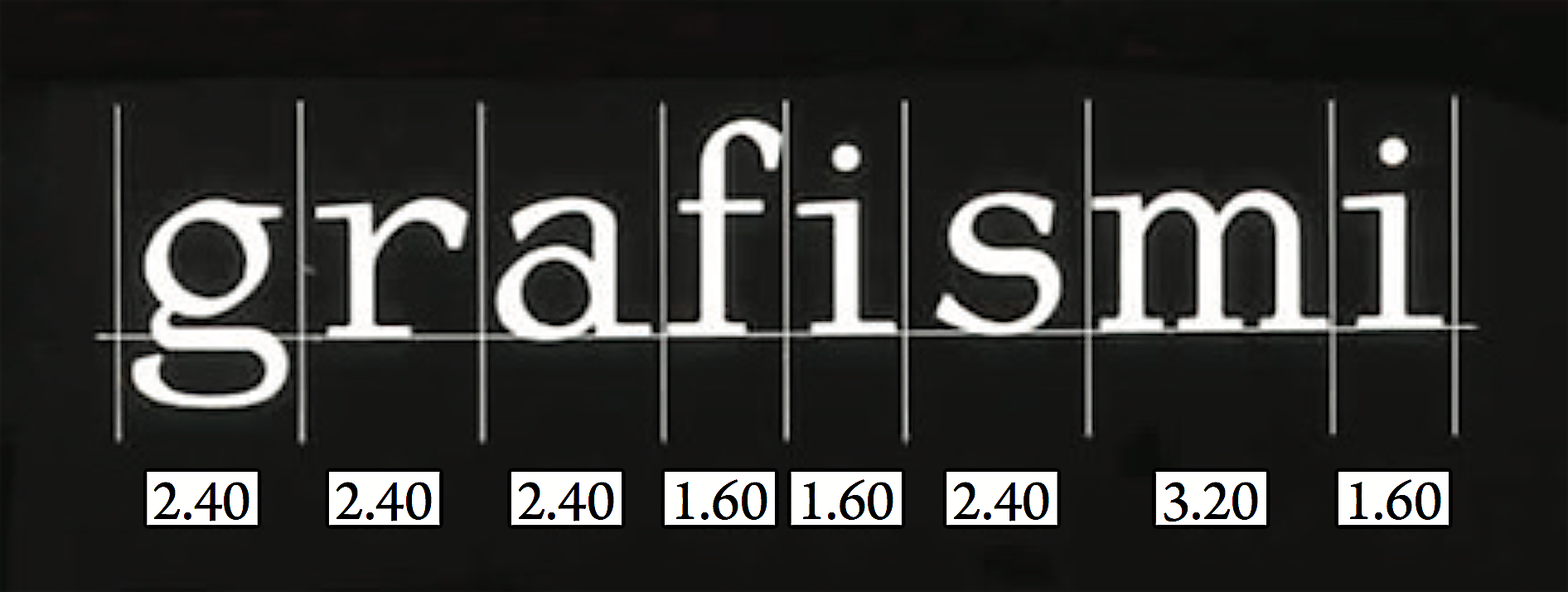
file name: Olivetti Venezia 1964 1965

file name: Olivetti Vista

file name: Olivetti Windsor

file name: Olivetti Lettera22 Typewriter Marcello Nizzoli 1950
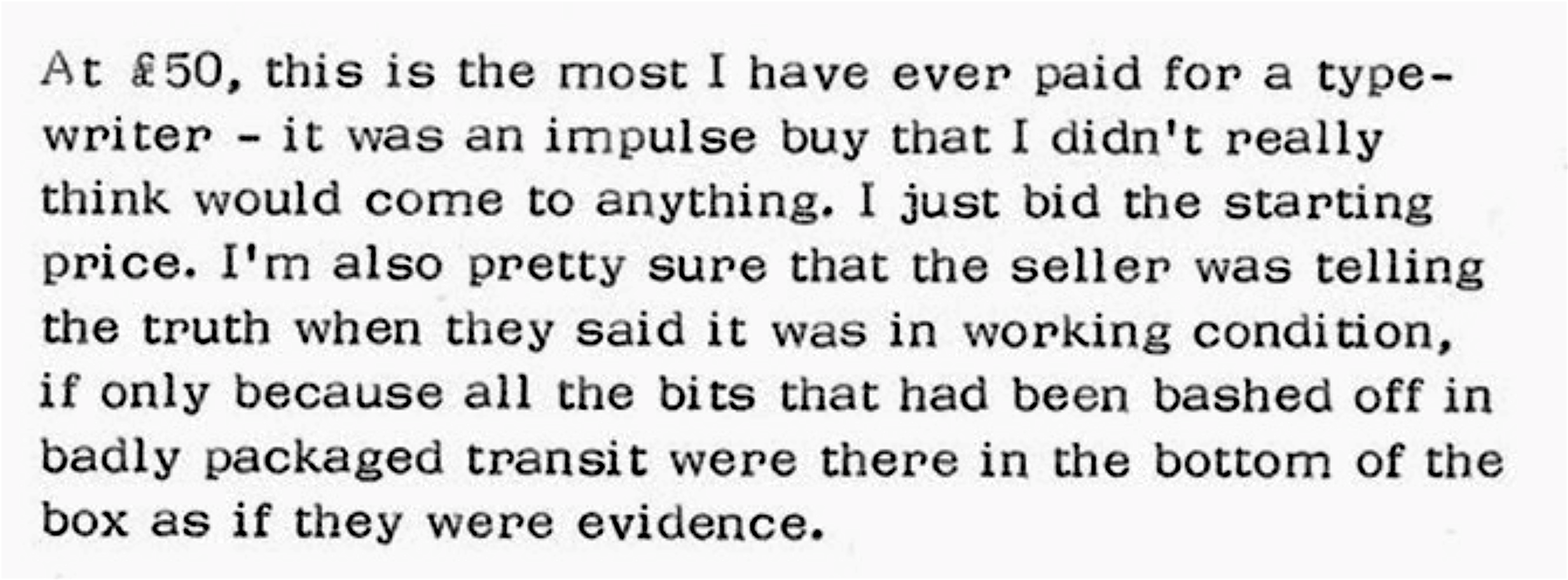
file name: Imre Reiner Olivetti Graphika 1957

file name: Imre Reiner Reiner Consilium
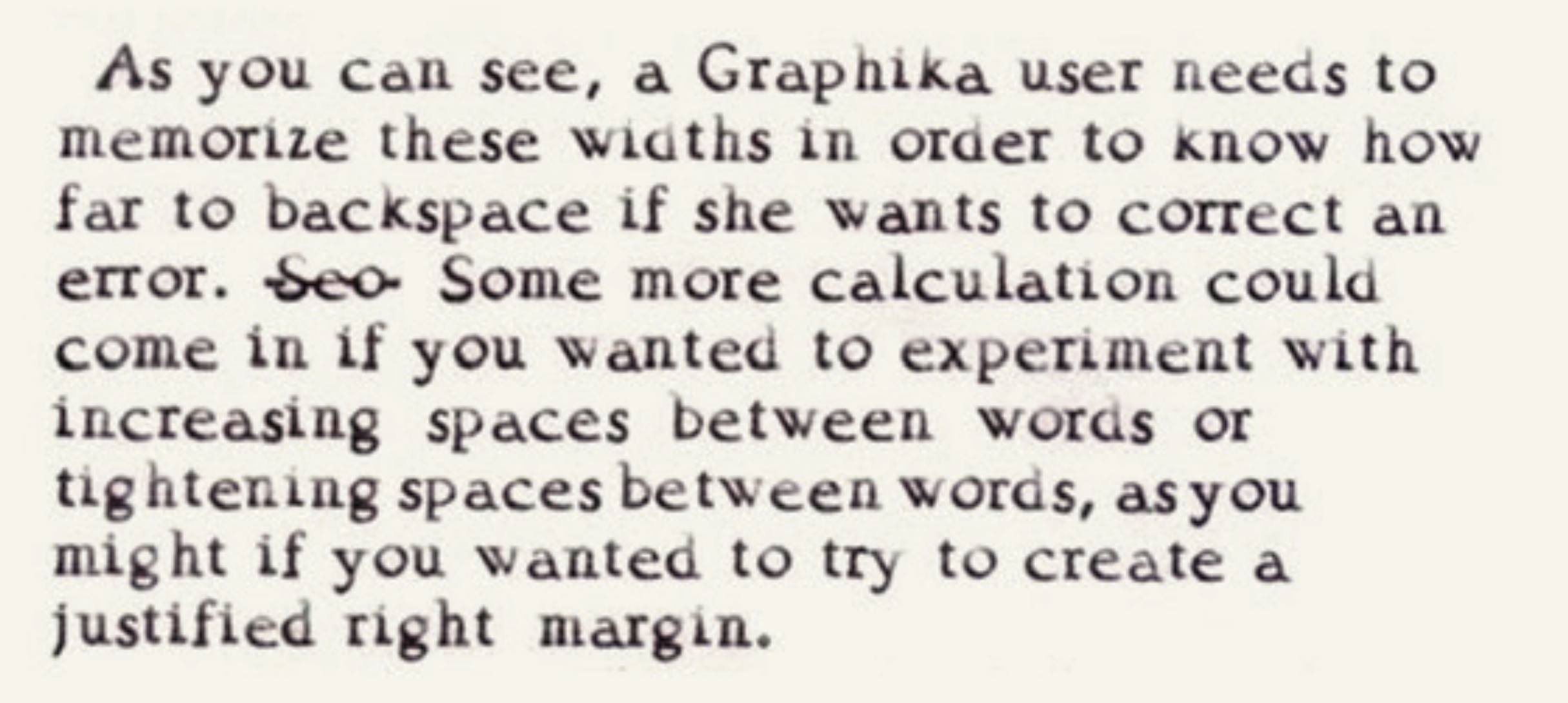
file name: A M Cassandre Olivetti Graphika

file name: Wim Crouwel Olivetti Typeface 1974
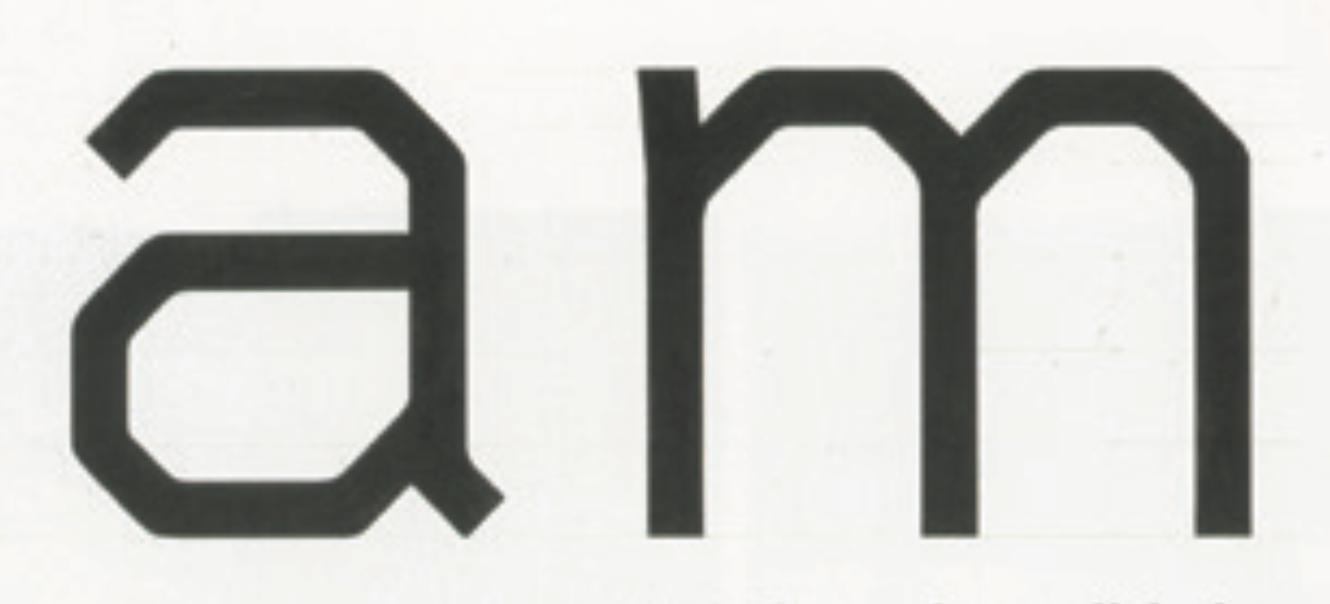
file name: Wim Crouwel Olivetti Typeface 1974

file name: Josh Young Sirio 2014 after Herbert Lindinger Olivetti Sirio

file name: Josh Young Sirio 2014 after Herbert Lindinger Olivetti Sirio
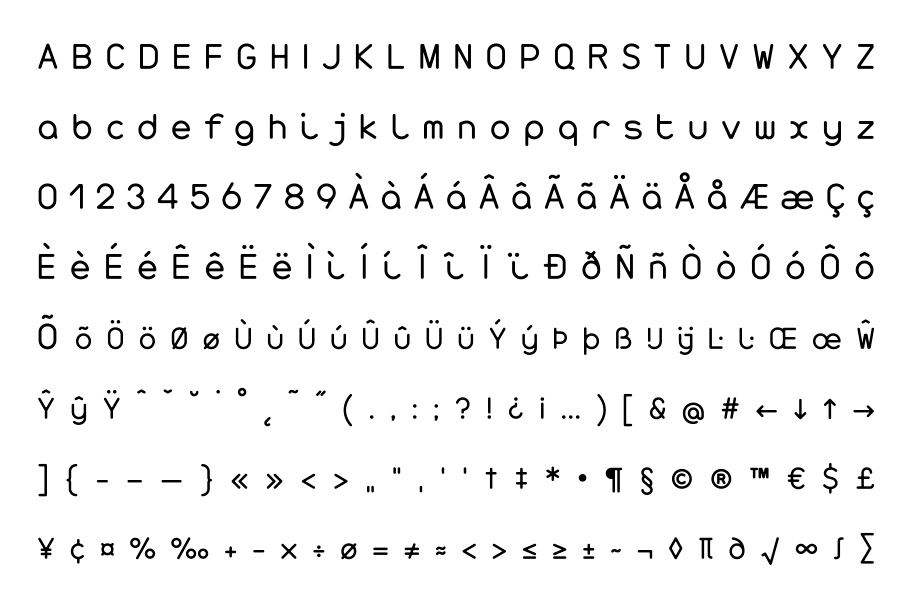
file name: Josh Young Sirio 2014 after Herbert Lindinger Olivetti Sirio
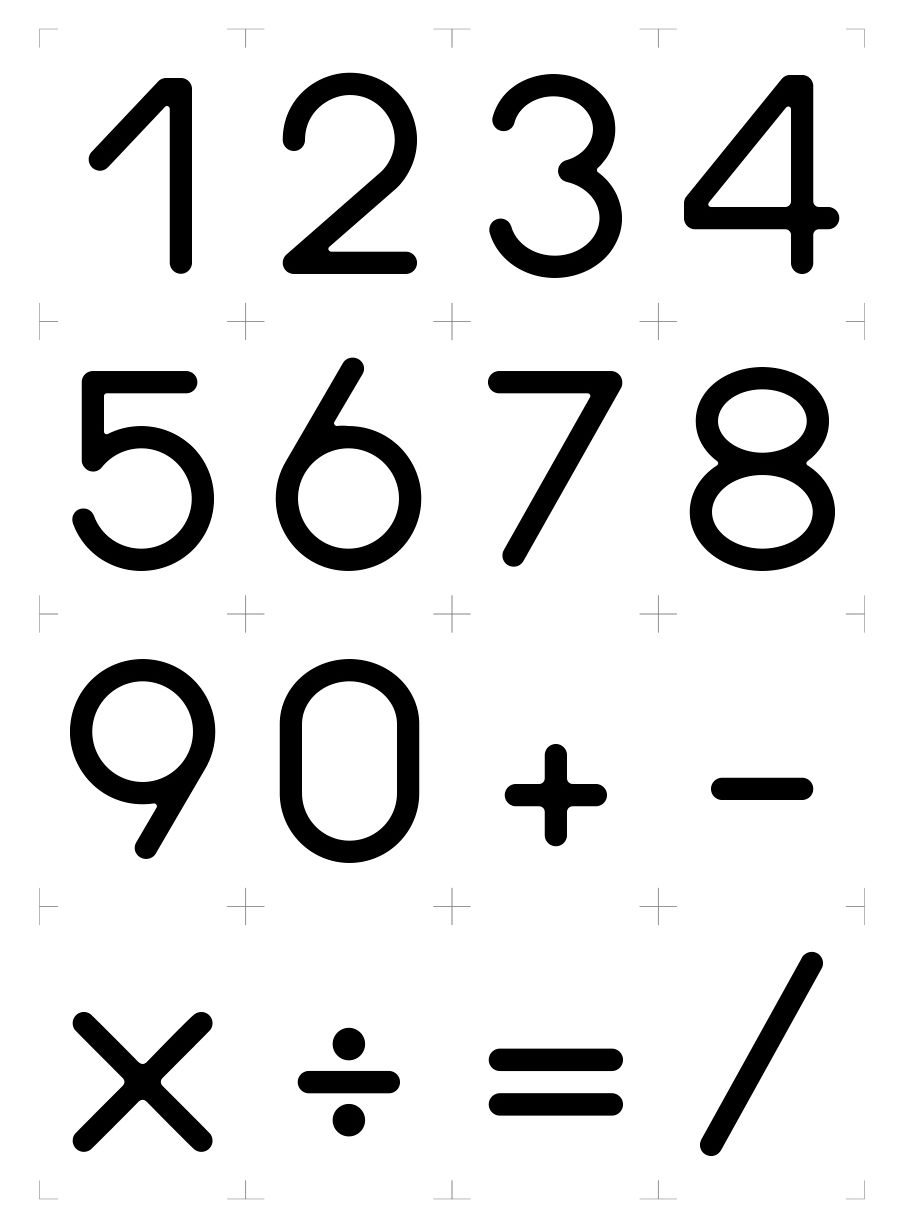
file name: Josh Young Sirio 2014 after Herbert Lindinger Olivetti Sirio
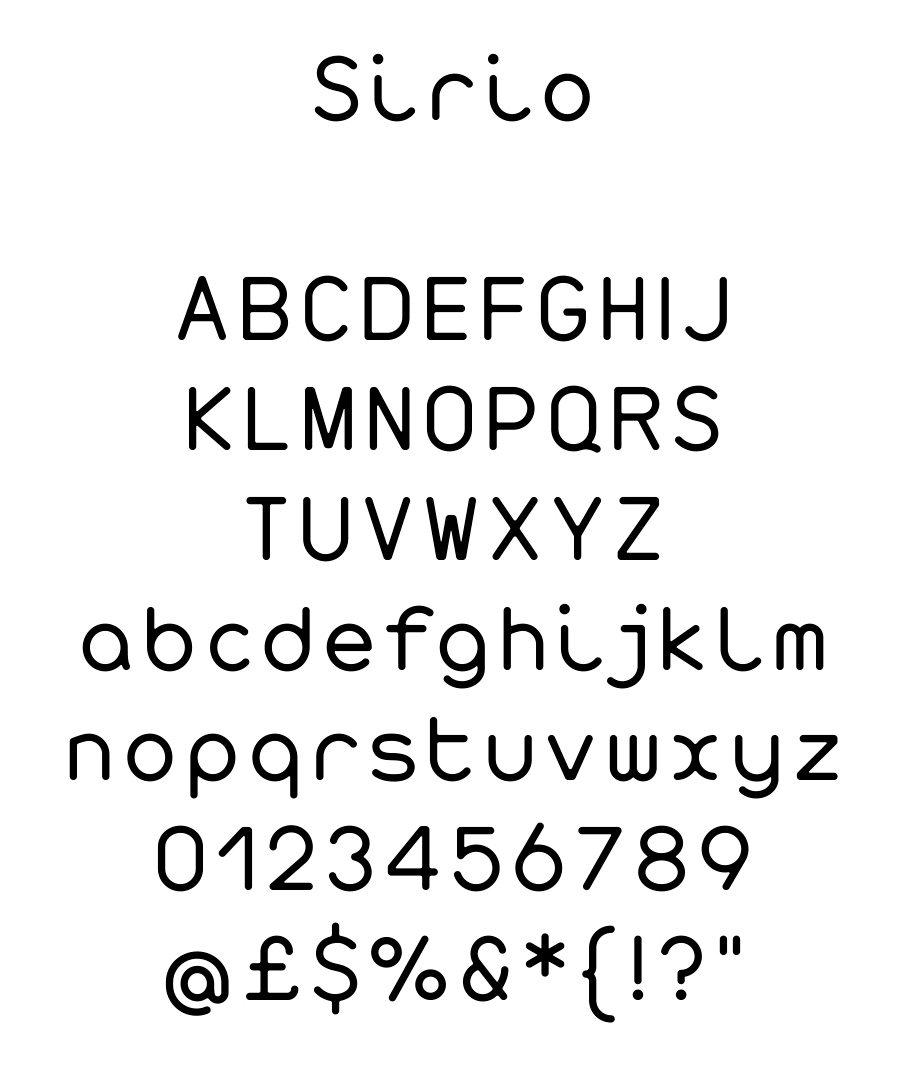
file name: Josh Young Sirio 2014 after Herbert Lindinger Olivetti Sirio
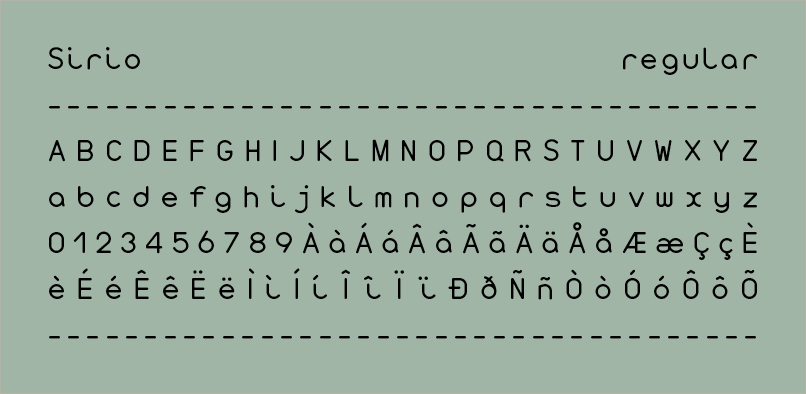
file name: Josh Young Sirio 2014 after Herbert Lindinger Olivetti Sirio
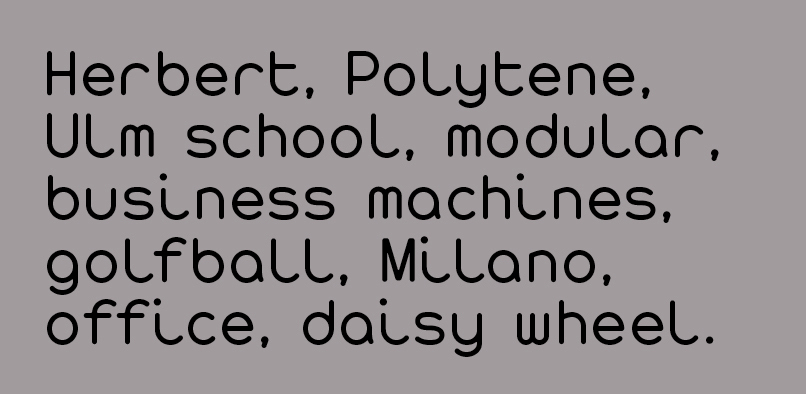
file name: Josh Young Sirio 2014 after Herbert Lindinger Olivetti Sirio
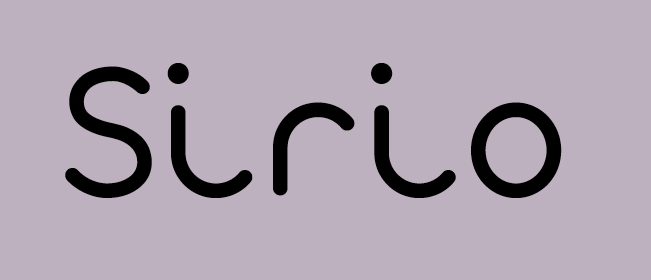
file name: Josh Young Sirio 2014 after Herbert Lindinger Olivetti Sirio

file name: Kobi Benezni Lettera 2008 after Olivetti Candia

file name: Josef Muller Brockmann Candia 1970s
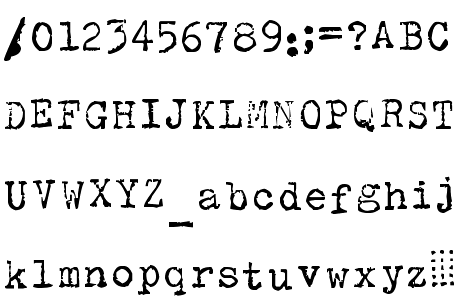
file name: Hernan Asorey Olivetti Type2 2010
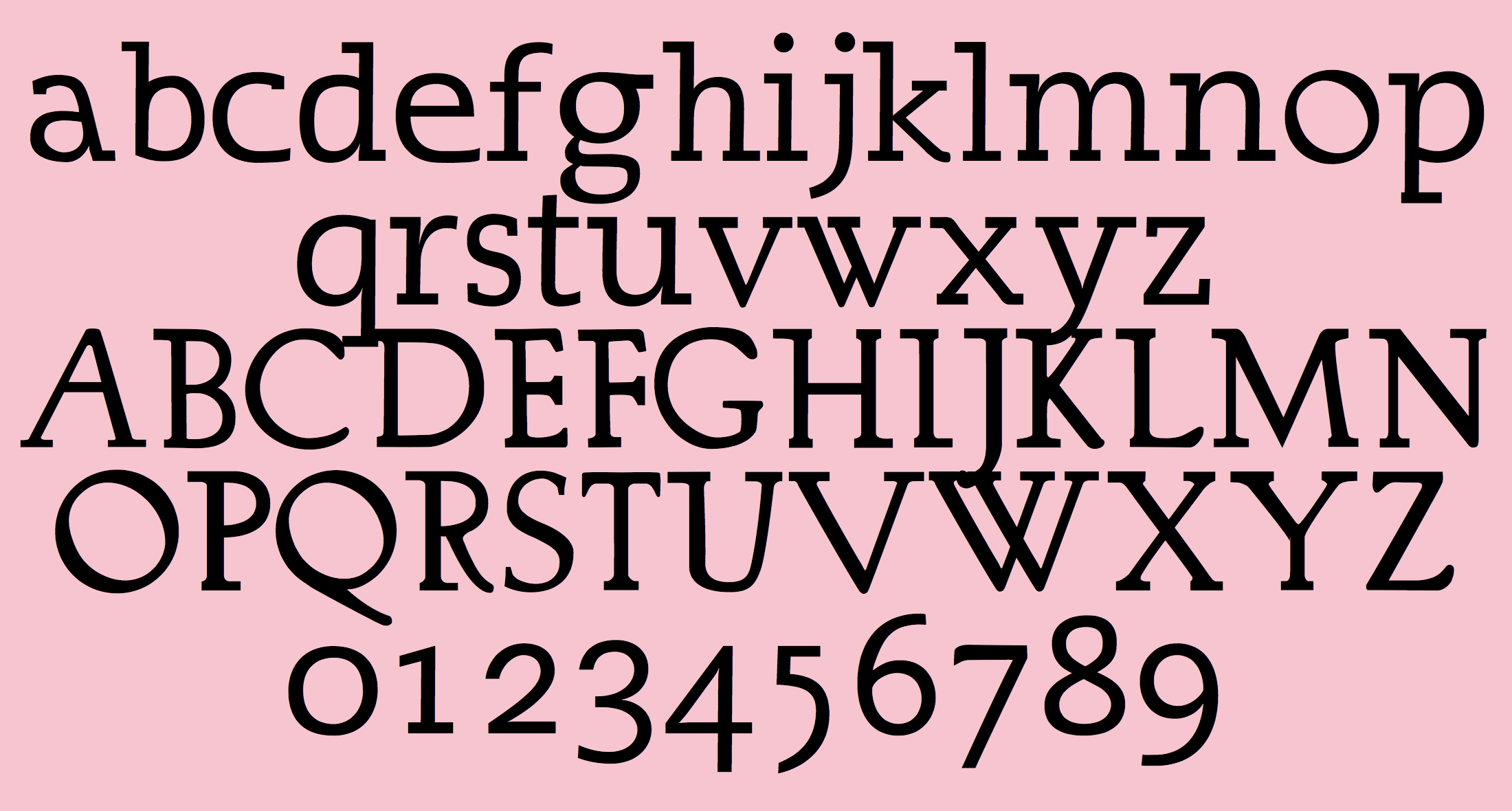
file name: Ian Davies Cassandre Classic 2009
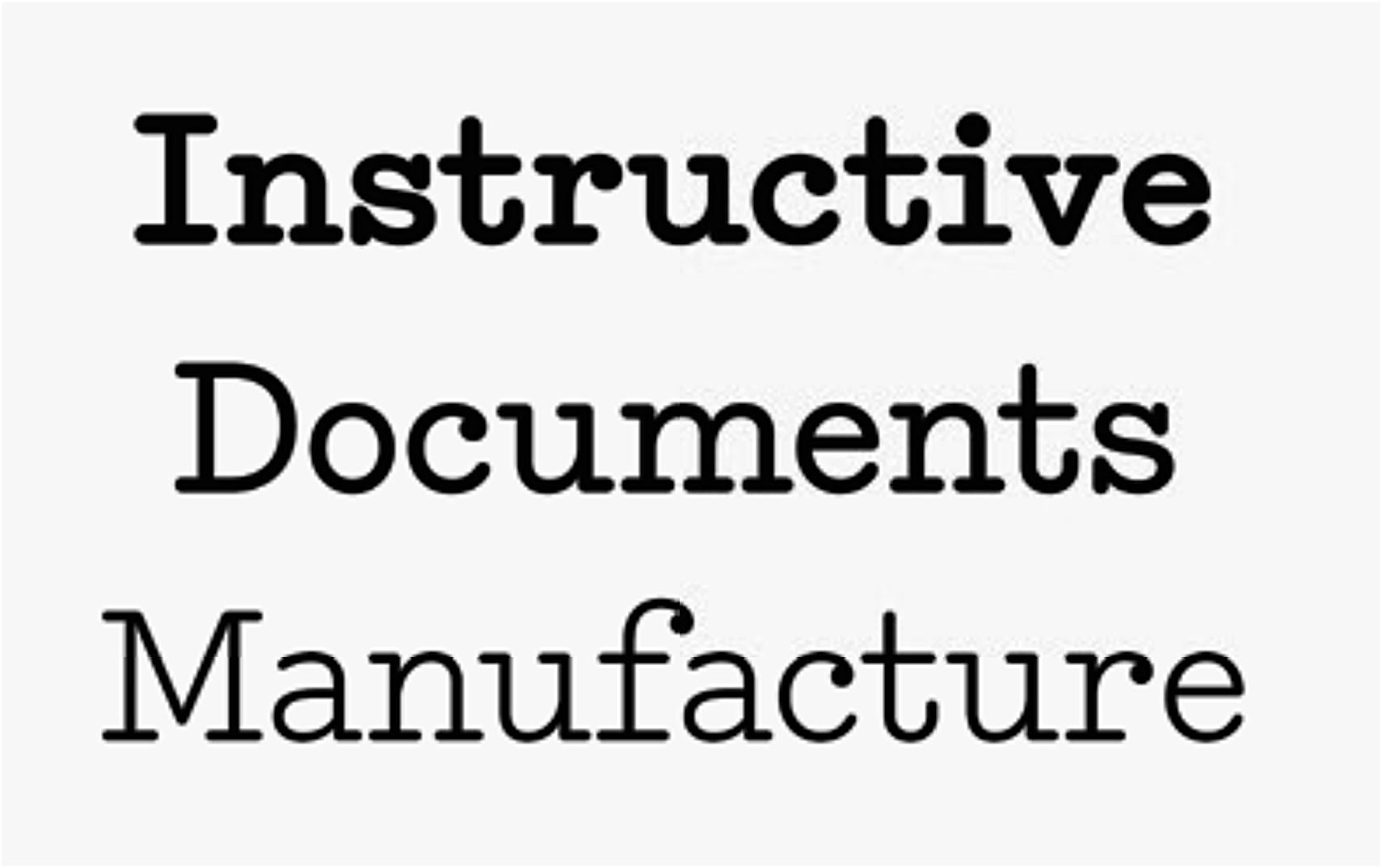
file name: Henrik Kubel Typewriter 2012 after Olivetti Elite
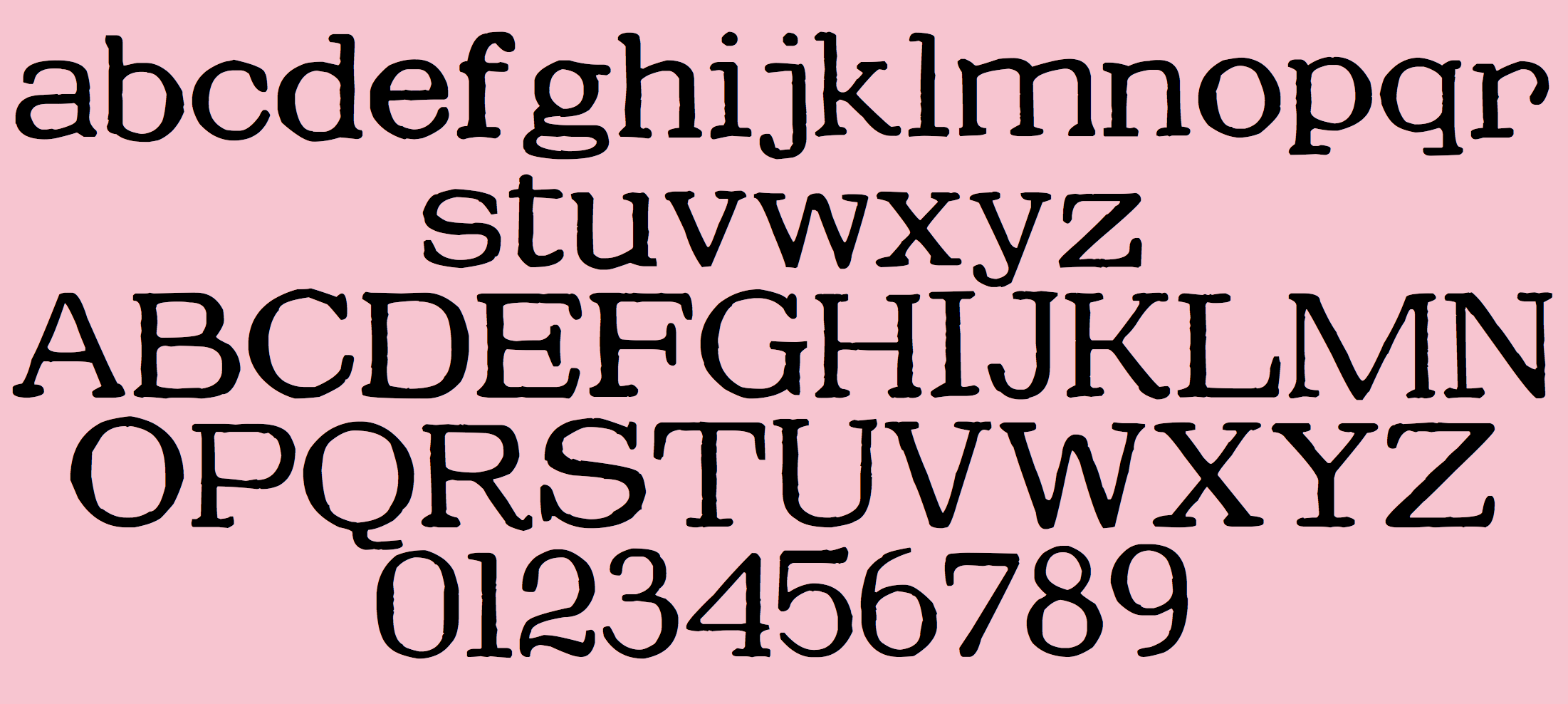
file name: Richard Polt Reiner Graphika 2010 based on Imre Reiner Olivetti Reiner Graphika
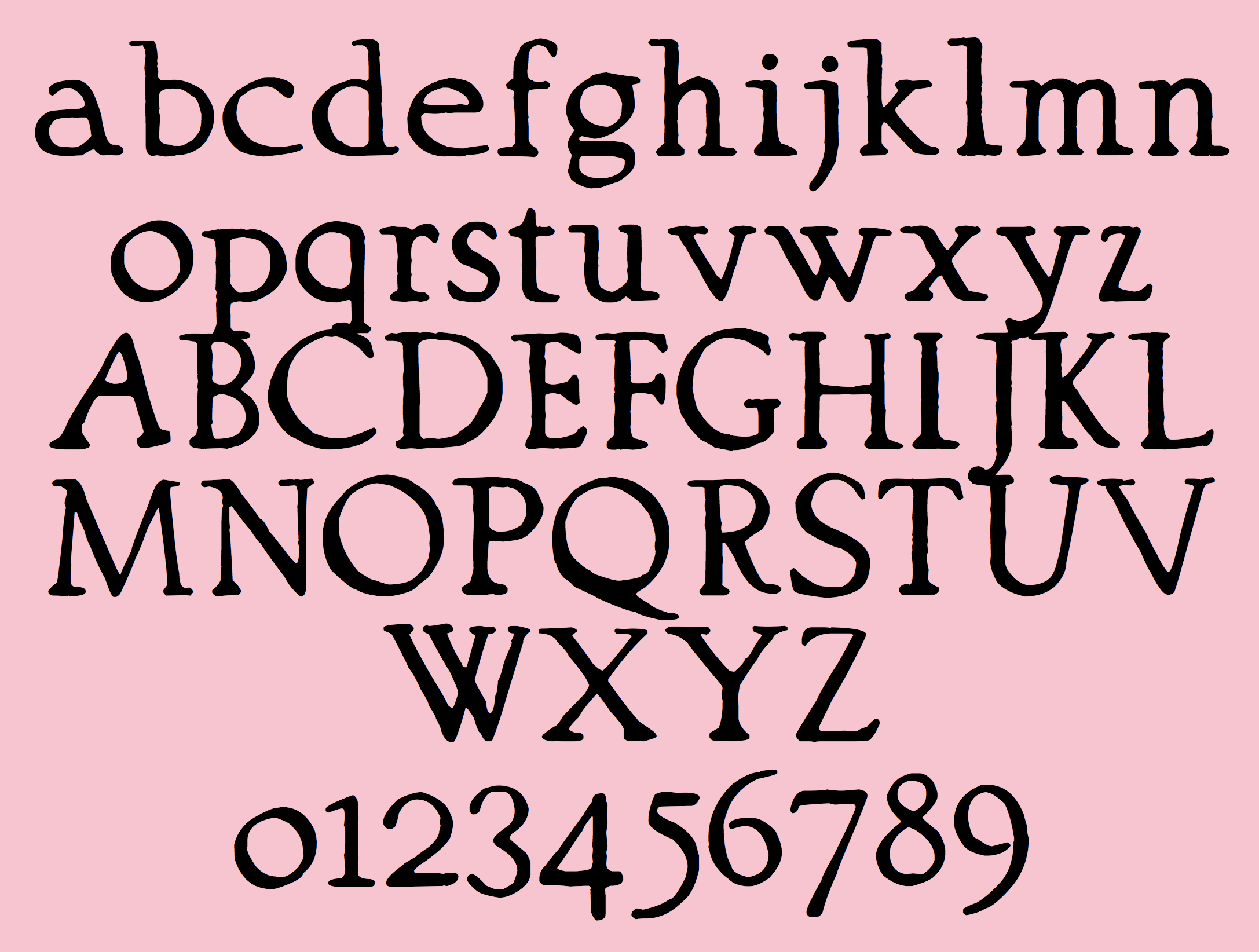
file name: Richard Polt Cassandre Graphika 2010
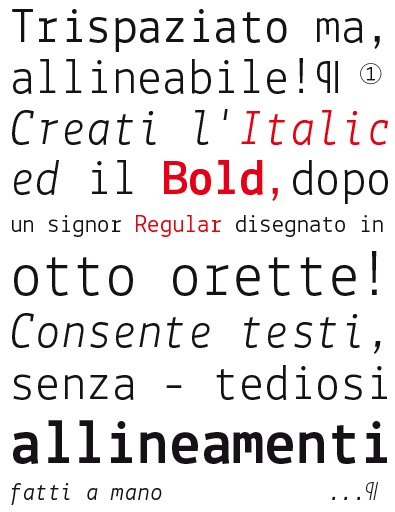
file name: I S I A Urbino Lekton 2008

file name: I S I A Urbino Lekton 2008 2010

file name: I S I A Urbino Lekton Code 2007 2017

file name: I S I A Urbino Lekton Code 2007 2017a

file name: I S I A Urbino Lekton Code 2007 2017b
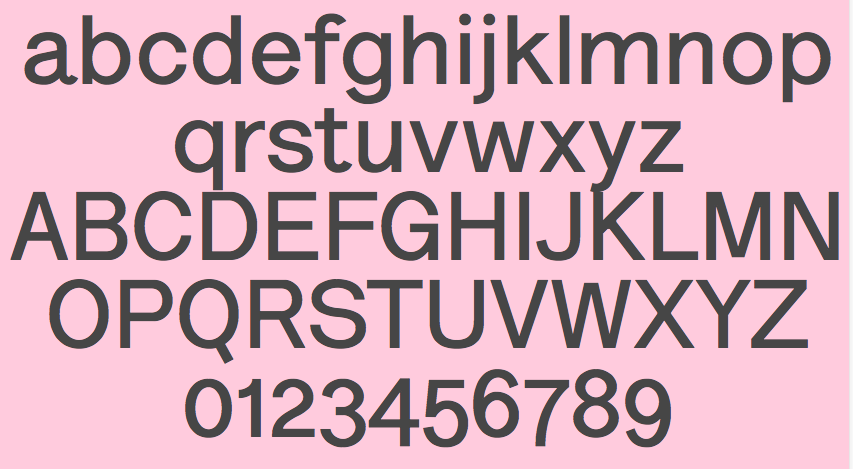
file name: Kobi Benezri Lettera Text Pro Bold 2012
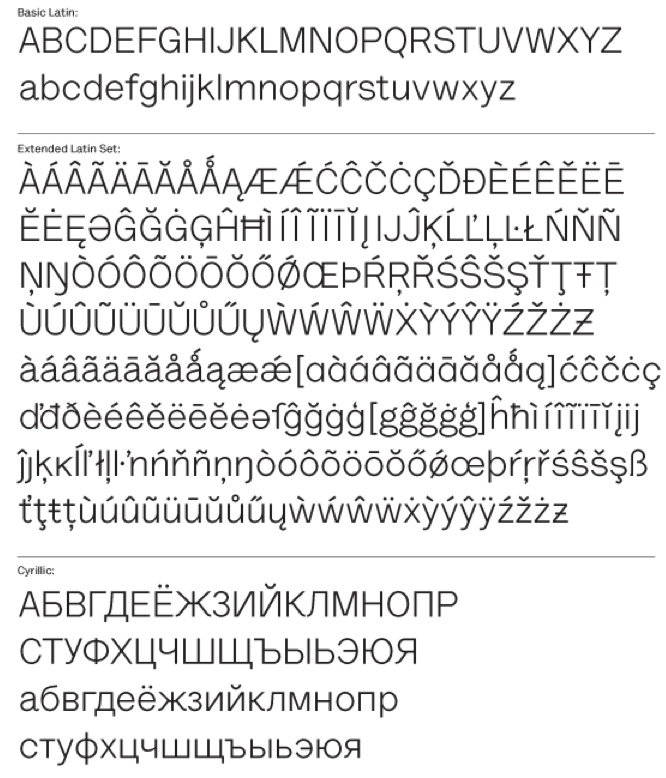
file name: Kobi Benezri Lettera Txt 2012
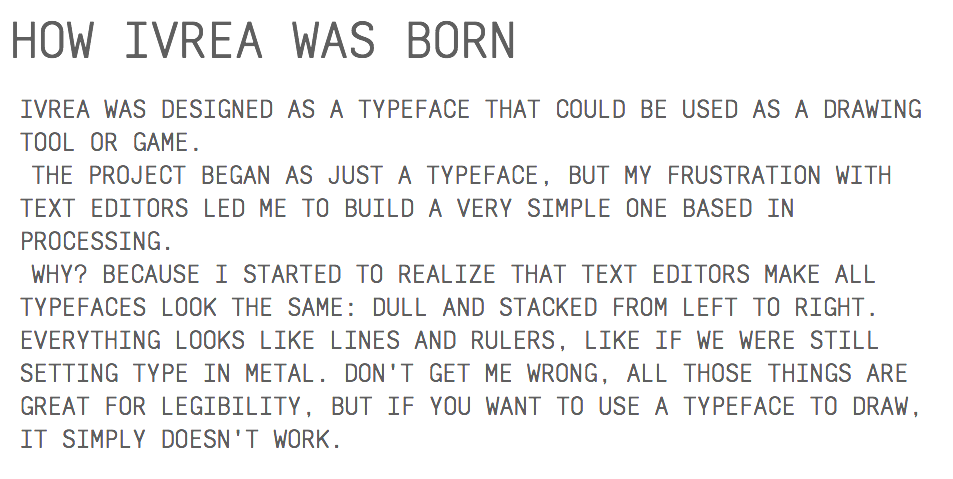
file name: Inigo Lopez Vazquez Ivrea 2015
| | |
|
Luc Devroye ⦿ School of Computer Science ⦿ McGill University Montreal, Canada H3A 2K6 ⦿ lucdevroye@gmail.com ⦿ https://luc.devroye.org ⦿ https://luc.devroye.org/fonts.html |

